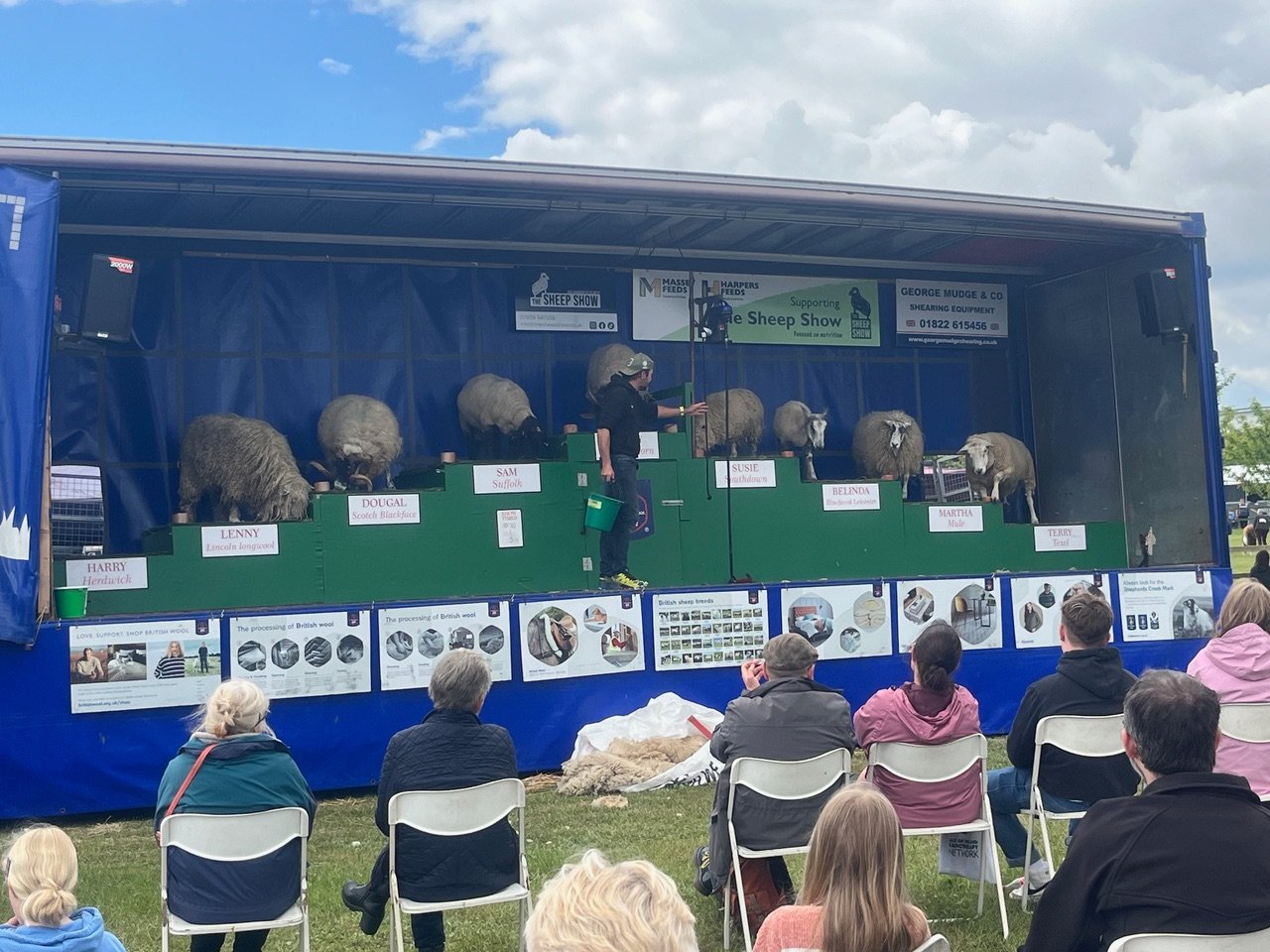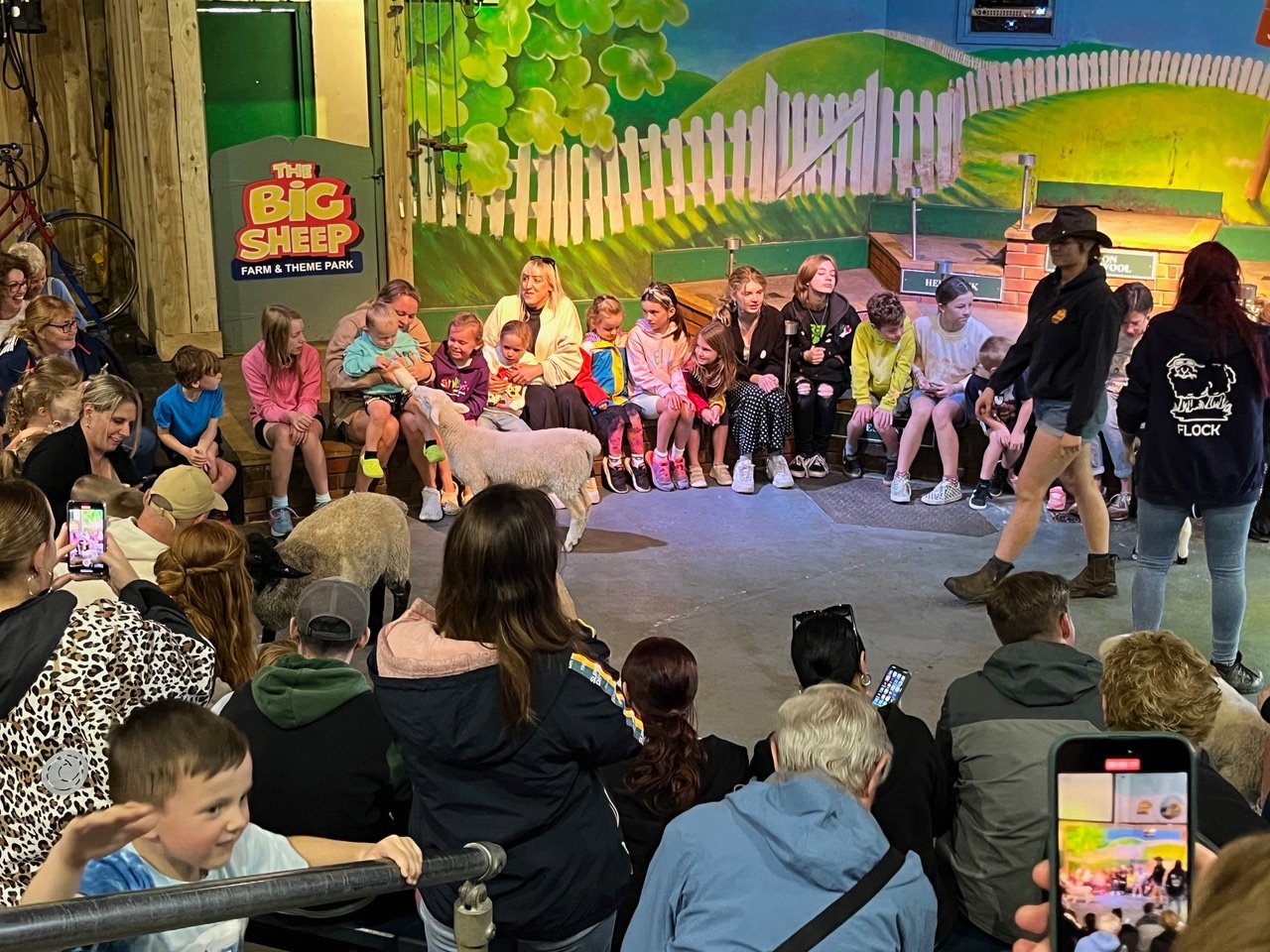Entertainment
Providing entertainment using sheep can be done for varying reasons and in various ways.
To produce a money-making entity, a provider may see entertainment as their means. A provider may perceive that having their ‘offer’ contain some entertaining elements will increase its appeal, and maybe widen the market for it. A provider may recognise that their core product lacks the dimension of being entertaining and so knows that this element needs to be inserted. A provider may be wishing to convey an educational message and will opt to do so in an as entertaining a manner as possible to endow that message with maximum appeal. A provider may be well-versed in the ways of good communication, and so will instinctively wish to use entertaining styles for connecting with their audience.
Sheep are appealing in themselves, lambs particularly. So, they are intrinsically a draw. How tempting it must be to any provider whose prime concern is not sheep’s well-being, welfare, or dignity, to not merely have sheep on view to a visitor but to heighten attraction by getting the already appealing creatures to do things that will entertain.
Of entities displaying sheep to the public there is a range, from those not much or obviously, representing entertainment, through to those which do represent entertainment.
At the National Trust’s Wimpole Home Farm, the only entertainment is to observe what is naturally occurring. At the Farm the welfare of its sheep is put first and foremost. Visitors can watch mothers and young lambs in early days after lambing, but are not allowed to feed them or get close to them. An air of calm prevails.
It would appear that a provider deems that visitors will be more keen to attend at his provision of sheep if the opportunity is given not just to view sheep but to engage with them; and that offered engagement is feeding - and the petting associated. Feed is made available to the visitor for purchase, and/or the visitor is given chance to bottle feed lambs. The visitor is entertained.
At Adam Henson’s Cotswold Farm Park visitors can feed sheep with purchased food and for a period the opportunity is available to visitors - twice a day - to bottle feed lambs.
Self-described as ‘edu-tainment’ is The Sheep Show. This stage show tours the UK, giving three performances in a day, at 120 events per year, to ‘an estimated 2.5 million people’. In essence, on the stage on a lorry-trailer, with accompanying commentary and explanation, one sheep is sheared; and then several different breed sheep are put on platforms, chained so that they do not escape, kept fed, and the highlight of the show being that sheep ‘dance’.
At The Big Sheep Farm & Theme Park is a similar performance, except solely with rams, and no shearing, and no ‘dancing’. It takes place in the show arena as does ‘Bottle Feeding Lambs’, for which latter event very few lambs are used. Both these shows happen twice daily in high season. Food is on sale for feeding to adult sheep - but not of course to the lambs - in the Animal Barn.
Probably geared to be the very most entertaining of the sheep events of The Big Sheep Farm & Theme Park is the Sheep Racing in which sheep rush round a race course, with soft-toy-sheep riders placed on their backs. They go over jumps.
In the USA at rodeos ‘mutton busting’ happens, in which children ride sheep until they fall off. In its ‘Mutton busting’ item Wikipedia says ‘Organizations such as the ASPCA discourage the practice on the grounds that it does not promote kindness to, or respect of, animals.’ Wikipedia references what the American Society for the Prevention of Cruelty to Animals (ASPCA) says, which is this: ‘… the ASPCA is opposed to children’s rodeo events such as goat tying, calf riding and sheep riding “mutton busting” which do not promote humane care and respect for animals.’ (‘Animals in Entertainment: 5.4 Rodeo’).
It is clear that entities offered to visitors and the general public which use sheep range from those overtly and seriously educational, through those bearing a slight component of entertainment, onward through those them, ending with items whose sole role is to entertain.
If a provider’s objective is their own benefit, what they choose to do with a sheep towards that objective can be not to the sheep’s benefit. An item may be judged as needing to be - to a lesser or greater degree - entertaining, to attract people enough and in sufficient number for achievement of the provider’s purpose.
Little of what sheep are required to do as entertainers is likely to coincide with what it is sheep’s nature and custom to do. Racing, ‘dancing’, and suchlike are not what sheep do normally. Sheep are not for riding. Can it perhaps be that, to an extent, the very attraction of sheep attractions to some visitors is that these display sheep doing things that are not expected of sheep?
Sheep are being asked to do, and trained to do, what they do not do naturally. They are not performing animals. And those sheep appearing in The Sheep Show will have to endure much travelling: they will be ‘on the road’ rather than on home pasture.
When being required to give entertainment, sheep are being used and exploited, they are very likely being demeaned, and sometimes they are treated cruelly.





